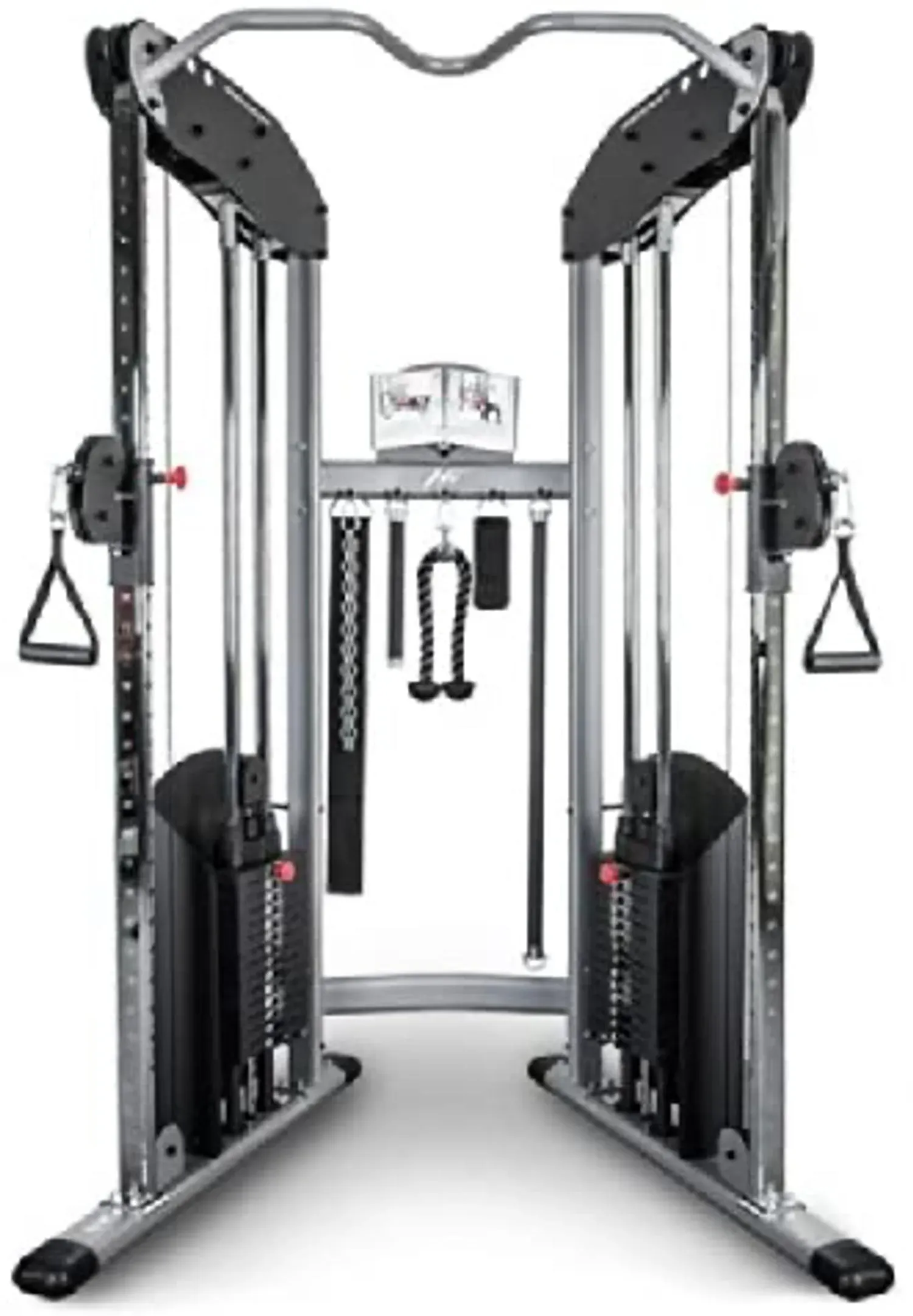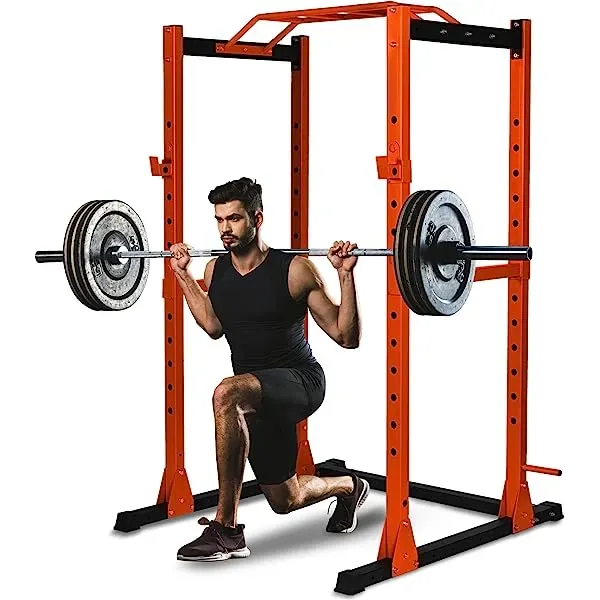Table of Contents
Building a home gym sounds great in theory, right? You save time, avoid crowded spaces, and sweat in peace. But then reality hits. You've got limited space, a tight budget, and that rack and barbell setup only gets you so far. You start missing the sheer variety of exercises you could do at a commercial gym, especially those focused on isolation and functional movement. This is wherecable home gym equipmententers the picture, often seen as the missing piece in many personal workout spaces.
Why Your Home Gym Needs Versatile Cable Home Gym Equipment
Why Your Home Gym Needs Versatile Cable Home Gym Equipment
Unlock a World of Exercise Angles
If your home gym currently consists of just dumbbells and a bench, you're likely hitting a wall with exercise variety. Free weights are fantastic for compound movements like squats and presses, no argument there. But they rely heavily on gravity, limiting the angles you can work from.Why Your Home Gym Needs Versatile Cable Home Gym Equipmentbecomes clear when you want to move beyond vertical resistance. Cables provide consistent tension regardless of the direction you're pulling or pushing. Think chest flyes that feel right through the whole movement, or triceps extensions where the load doesn't drop off at the top. This opens up dozens, if not hundreds, of exercises you simply can't replicate effectively with just iron.
Target Muscles with Precision
Trying to isolate a specific muscle group with free weights can be tricky. Your body naturally recruits stabilizing muscles, which is great for overall strength but less so when you're trying to zero in on, say, the peak of your bicep or the outer sweep of your quad. Cable machines excel here. The fixed path (or controlled path on a functional trainer) allows you to minimize assistance from other muscles, directing the stress precisely where you want it. This precision is crucial for addressing imbalances, rehabbing injuries, or just sculpting specific areas you want to emphasize. It's like trading a shotgun for a sniper rifle when it comes to muscle activation.
- Consistent tension through full range of motion
- Ability to target specific muscle groups effectively
- Versatility for pushing, pulling, and rotational movements
- Safer options for certain isolation exercises
- Space-saving designs compared to multiple single-station machines
Build Functional Strength and Stability
Real-world strength isn't just about how much you can lift straight up and down. It's about moving efficiently, rotating, and resisting forces from different directions. This is known as functional strength, and it’s vital for athletes and everyday life alike. Cable systems, particularly functional trainers with dual pulleys, are kings of functional training. You can perform exercises that mimic throwing, swinging, or twisting motions, engaging core stability and improving coordination. Adding this element to your routine, something difficult with only free weights, is a compelling reason why your home gym needs versatile cable home gym equipment. It’s not just about looking strong; it’s about being strong in motion.
Breaking Down the Types of Cable Home Gym Equipment
Breaking Down the Types of Cable Home Gym Equipment
The Workhorse: Single Stack Cable Machines
Alright, so you're sold on the idea of adding cables. But what kind? The first type you'll likely run into are single stack cable machines. Think of these as the classic lat pulldown or seated row machines you see everywhere, but sometimes combined into one unit. They usually have one weight stack and a single point (or sometimes a high and low pulley) where you attach handles. These are great for specific, targeted movements. Need to hammer your lats? A single stack pulldown machine is purpose-built for that. Want to isolate your triceps with pushdowns? Same deal. They are straightforward, often have a smaller footprint than dual stack systems, and if you know exactly what exercises you want to do, they can be a solid addition to yourcable home gym equipmentsetup.
The Swiss Army Knife: Functional Trainers and Dual Stacks
Now, if versatility is your main game, you're looking at functional trainers or dual adjustable pulleys. These are the setups with two weight stacks and pulleys that you can adjust up and down along a frame. This is where the magic really happens for a home gym. Because you have two independent points of resistance, you can do everything a single stack machine can, plus a massive range of crossover, rotational, and asymmetrical movements. Standing chest flyes, cable rows with a wider range, wood chops for core strength, heck, even cable squats or lunges if you get creative with attachments. If you see someone doing something that looks like a sport-specific movement on a cable machine, chances are they're on a functional trainer. It's the piece ofcable home gym equipmentthat truly brings the full gym experience home.
Type of Cable Machine | Key Feature | Best For |
|---|---|---|
Single Stack | One weight stack, often fixed high/low pulleys | Targeted, specific exercises (e.g., lat pulldowns, triceps pushdowns) |
Functional Trainer / Dual Stack | Two adjustable weight stacks/pulleys | Maximum exercise variety, functional movements, crossovers, isolation |
Choosing the Right Cable Home Gym Equipment for Your Setup
Choosing the Right Cable Home Gym Equipment for Your Setup
First, Look at Your Space and Wallet
Alright, let's get down to brass tacks. Before you get starry-eyed over a dual-stack monster, you need to be brutally honest about two things: how much room you actually have and what you're willing to spend.Choosing the Right Cable Home Gym Equipment for Your Setupstarts here. A full-blown functional trainer with two heavy stacks takes up a significant footprint, not just the machine itself, but also the clearance you need around it for exercises like cable crossovers. Measure your space carefully – height matters too if you're in a basement or garage with low ceilings. Then, set a budget. Cable machines, especially quality ones, aren't cheap. Prices can range from a few hundred bucks for a basic cable attachment system for your existing rack to several thousand for a commercial-grade functional trainer. Knowing your limits upfront saves you a lot of heartache.
Match the Machine to Your Mission
What do you actually want to *do* with this thing? Are you mainly looking to add lat pulldowns and seated rows because your current setup lacks them? A single-stack machine or even a good rack attachment might be plenty. Are you aiming for full-body workouts, functional movements, and isolation exercises for every muscle group? Then a functional trainer is likely the way to go. Consider the weight stack capacity – are you a beginner or someone who can row the equivalent of a small car? Don't pay for weight you'll never lift. Also, think about attachments. Most come with standard handles, but access to ropes, bars, and ankle straps expands your exercise library dramatically. Make sure thecable home gym equipmentyou choose is compatible with the attachments you'll need.
Consideration | Why It Matters | Impact on Choice |
|---|---|---|
Available Space | Determines machine footprint and exercise clearance | Single stack vs. Dual stack/Functional Trainer size |
Budget | Quality, features, and weight capacity vary greatly with price | Entry-level attachment vs. High-end machine |
Exercise Goals | Specific isolation vs. Full-body functional training | Single-function machine vs. Multi-functional trainer |
Strength Level | Required weight stack capacity | Standard vs. Upgraded weight stack options |
Don't Skimp on Quality or Smoothness
Buyingcable home gym equipmentisn't like buying a t-shirt. You want it to last and, crucially, feel good to use. Cheap machines often have jerky pulleys, sticky cables, and flimsy frames. This isn't just annoying; it can be distracting and even detrimental to your form and results. Look for machines with smooth pulley systems – often an indicator of quality bearings. Check the gauge of the steel frame; thicker is generally better for stability and durability. If at all possible, try to test a similar model in person before buying. How does the weight transition? Is the cable movement fluid? Does it feel stable when you're pulling heavy? A quality piece of equipment might cost more upfront, but it pays dividends in performance, longevity, and not having to deal with a piece of junk.
Getting the Most Out of Your Cable Home Gym Equipment: Exercises and Tips
Getting the Most Out of Your Cable Home Gym Equipment: Exercises and Tips
Start Simple, Master the Movement
So you've got your shiny newcable home gym equipmentset up. Don't just yank on the handle and hope for the best. The real power of cables comes from controlled, deliberate movement. Start lighter than you think you need to. Focus on feeling the muscle you're trying to work. For a chest press, imagine squeezing your pecs together. For a row, think about pulling your shoulder blades back and down. The beauty of cables is the constant tension, so don't rush. Slow eccentrics (the lowering phase of the movement) can be particularly brutal and effective. Try a standard standing cable chest press, seated cable rows, or overhead cable triceps extensions to get a feel for the smooth resistance. These foundational movements are your gateway.
Expand Your Arsenal with Attachments and Angles
Once you're comfortable with the basics, it's time to get creative with yourcable home gym equipment. The handles that came with the machine are just the beginning. A rope attachment is gold for face pulls (excellent for shoulder health and upper back) and triceps extensions. A straight bar works wonders for bicep curls and lat pushdowns. An ankle strap? Hello, cable kickbacks and hamstring curls. Don't be afraid to experiment with pulley height and your body position relative to the machine. A low pulley cable fly hits the upper chest differently than a high pulley fly hitting the lower chest. Step further away, step closer, change your grip – each tweak offers a slightly different stimulus. This is where the versatility really pays off.
Attachment | Common Exercises | Muscle Focus |
|---|---|---|
Rope | Face Pulls, Triceps Extensions, Hammer Curls | Rear Delts, Triceps, Biceps/Forearms |
Straight Bar | Bicep Curls, Lat Pushdowns, Cable Rows | Biceps, Lats, Upper Back |
Ankle Strap | Cable Kickbacks, Hamstring Curls, Abductions/Adductions | Glutes, Hamstrings, Hips |
D-Handle | Single-Arm Rows, Single-Arm Presses, Lateral Raises | Upper Back, Chest/Shoulders, Shoulders |
Making the Most of Your Cable Home Gym Setup
So, we've walked through the landscape ofcable home gym equipment, from the space-saving functional trainers to the more dedicated cable crossovers. The point isn't that these machines are a magic bullet, but rather that they offer a practical solution to common home gym limitations. They provide consistent tension, allow for a broader movement library than just barbells and dumbbells, and can hit those smaller, stabilizing muscles often overlooked. It's an investment, sure, both in dollars and potentially in figuring out placement, but the payoff is a significantly more capable workout space. Don't expect overnight transformations, but do expect the ability to finally perform those face pulls, cable rows, and triceps pushdowns without waiting in line at the commercial gym.